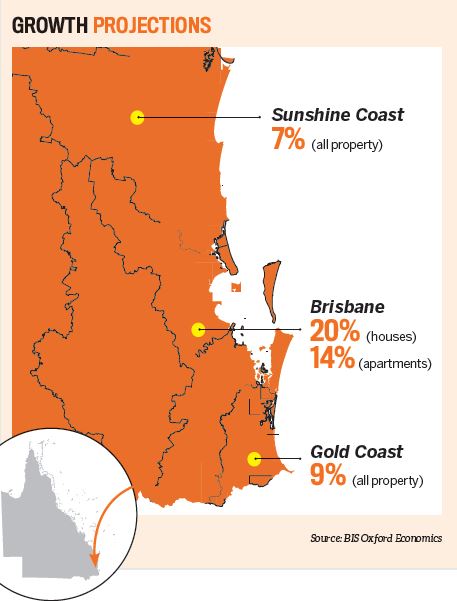As the state moves on from the mining bust, what is driving its economy forward?
It's been a tumultuous decade in Queensland from a property standpoint as a number of factors combined to bring property price growth to a halt.
The economic impact of weakening resources investment was widely felt, especially as China’s rate of economic growth slowed and foreign investment in Australian property plummeted. Relatively weak population growth and an oversupply of apartments added to the state’s woes, and, as a result, Southeast Queensland has failed to enjoy the booming growth of its counterparts to the south in recent years.
However, investors are finally set to be rewarded for sticking it out in the state, as growth prospects look positive for the year ahead. The Queensland economy is emerging from its postmining- boom malaise, with further economic improvement expected.
According to the 2018 Queensland Infrastructure Outlook Report, prepared for the Queensland branch of the Civil Contractors Federation in conjunction with BIS Oxford Economics, Queensland has “a diversified economy” that is driven by mining, agriculture, international student education and tourism.
“Queensland’s exposure to the resources industry has directed the state’s economy over the past decade. Even so, following several years of underperformance as mining investment tumbled, the prospects for the Queensland economy are bright,” the report says.
“Following several years of underperformance as mining investment tumbled, the prospects for the Queensland economy are bright”
“The state’s diversity as a reputable tourism destination, its vast natural wealth, its close proximity to Asia, its growing population attracted to its warm climate and lifestyle benefits, and its increasing importance in industries such as defence, health and education, will continue to provide the foundation for future growth.”
Although risks to economic growth remain, BIS Oxford Economics predicts price growth in the short term.

“With credit conditions easing and interest rates falling, improving affordability will be a catalyst for raising price growth as stronger economic growth returns and the market moves into a rising deficiency. Brisbane’s median house price is forecast to rise by 20 per cent in the three years to June 2022, although most of the growth will be concentrated toward the latter part of this period. Price growth in the unit sector is expected to take longer to return, with a 14 per cent rise in the unit median forecast.”
Meanwhile, the Gold Coast and Sunshine Coast have each enjoyed solid house price rises in recent years, benefiting from strong migration inflows and an undersupplied market.
“Vacancy rates are low, but supply is rising. This will slow price growth, with total rises of nine per cent and seven per cent respectively forecast in the three years to June 2022,” Zigomanis says.
